Sainokami event
Updated: November 29, 2024
History of Sei-no-kami events
January 1st is called New Year's Day (Taishougatsu), while January 15th is called
The Sai no Kami event is held with New Year's pine decorations and
In the eastern part of Japan,
Inagi City’s Sei no Kami Event
In Inagi City, each region has had its own unique culture.
Old Sei-no-kami rituals (in the case of Yanoguchi and Sakahama areas)
Building a hut for the god of the barrier
After the hut is completed
For several days after the hut is completed and before it is burnt down, the children sleep inside the hut and protect it. This is because young people from other regions come and set the huts on fire and steal the sacred Dourokujin stone.
Mayu ball dumplings
Around the 13th, Mayutama dango are made to be baked and eaten during the Sei no Kami ritual.
burn the hut
Burn the hut on the 14th or 15th. When it is burned, not only children but also adults gather. Mayutama dango (rice cakes) or mochi (rice cakes) attached to a tree branch are held over a burning fire and roasted. It was said that if you ate these dumplings or rice cakes, you would be in good health for a year, and if you burned the beginning of your writing and soared high, you would improve your handwriting. When the fire subsides, they take out the Dourokujin stone and bury it somewhere again to hide it.
Differences between the sacred rituals of the past and now
Implementing organization
In the past, it was mainly children, such as elementary and junior high school students. Nowadays, it is mainly done by adults, with children helping out (adults include youth development district committees and neighborhood associations in each district). The scale of implementation has expanded from Kochu and Koza units to district units, and the size of the Sainokami hut has also become larger than in the past.
Implementation schedule
In the past, preparations started after the 7th and were burned on the 14th or 15th. Currently, preparation and burning days are held on Saturdays, Sundays, and holidays close to the 15th. The schedule will be decided according to the convenience of the adults.
Implementation report
In the past, people would sleep in the huts of the gods of the dead, set fire to huts in other areas, and steal the stones of Dourokujin, the object of worship, but these customs almost no longer exist.
Place of implementation
In the past, there was a fixed place to hold the Sei no Kami ritual, but now it is held in a park, vacant lot, rice field, or other location that is not surrounded by other people's houses. Shu no kami events have rapidly changed in line with modern Mori meetings. The content of the events may change, or things that have disappeared may be revived in new forms, but the traditions of each region remain and continue to live on in modern times.
References cited: “Folklore of Inagi City (Part 1)” “Inagi City History Volume 2”

The burning hut of the God of Fire (Higashi-Naganuma)
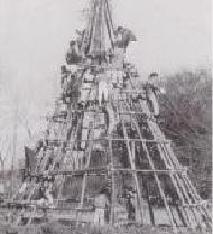
Making the frame of a hut with bamboo (Sakahama)
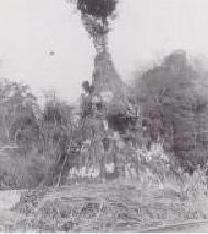
Build a hut by surrounding it with straw (100 villages)
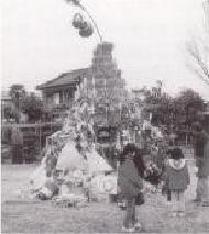
Putting decorations around (Yanoguchi)
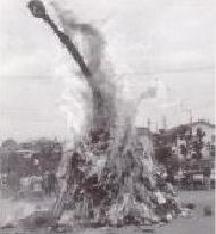
Burning a hut (Higashi Naganuma)
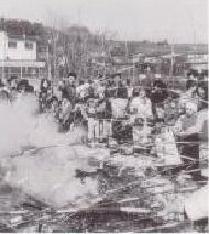
Baking Mayudama dumplings (Sakahama)
Regarding the schedule of the Sai no Kami event
Schedule of the Sai no Kami Ceremony
Please check here for the schedule of this year's Sai no Kami event.
Inquiries regarding this page
Inagi City Education Department Lifelong Learning Division
2111 Higashi-Naganuma, Inagi-shi, Tokyo
Phone: 042-377-2121 Fax: 042-379-0491







